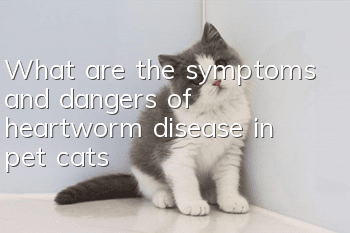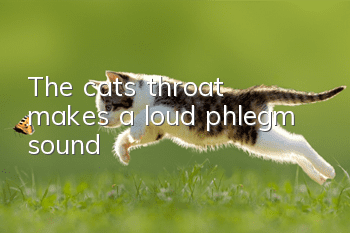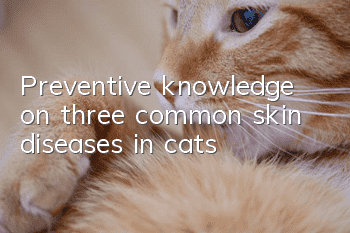What are the symptoms and dangers of heartworm disease in pet cats?

Helminthiasis is caused by heartworm, a parasite that enters pet cats through mosquito bites. In lower latitudes in Canada, this parasite is generally more widely distributed. Consult your local veterinarian to find out whether it is affected by the region. Heartworm disease in cats is different from heartworm disease in dogs, so if you have dogs and cats, be sure to pay attention to these symptoms.
British Shorthair
Mosquito bites are the primary means of transmitting heartworm disease in cats, and the only time of year when new infections are likely to occur is when mosquitoes are plentiful. Mosquito season varies depending on the geographical area; in Ontario, for example, it can range from April to November. However, it is worth noting that passwords in any region can be infected with heartworm, which needs to be paid attention to!
When the mosquito finds its next victim, it bites and injects a small amount of saliva. The parasite is small and can invade a small wound. From here it migrates into the body through the blood. Once it enters the body, it begins to develop quickly and then infects other places. The biggest difference between dogs and cats is that one or two worms can be life-threatening in cats, while in dogs these worms may not cause such severe symptoms.
Once the worms mature, they release microfilariae (the next generation of larvae) into the bloodstream. These larvae mature and begin their own life cycle. Worms tend to get into the many tissues of the body that cats become infested with, and these are mostly classified as worm burdens. The most common symptoms of feline heartworm disease are asthma and chronic vomiting, shortness of breath, coughing, decreased activity, mouth breathing, and gum discoloration (cyanosis, or blue).
- Can a kitten that is over a month old be bathed?
- Little kitten has diarrhea
- What breed is the blue and white cat? Is your family purebred?
- Can cats be couriered? How to transport cats by air?
- How to improve cat’s immunity?
- Why do I suddenly become allergic to cats when I have always had cats? I was not allergic before.
- Cultivate cats to develop good eating habits, cat feeding!
- What are the symptoms of parvoma in cats? What are the manifestations?
- How to train American Shorthair? The correct way to train American Shorthair cats!
- Why doesn't the kitten like to meow?



